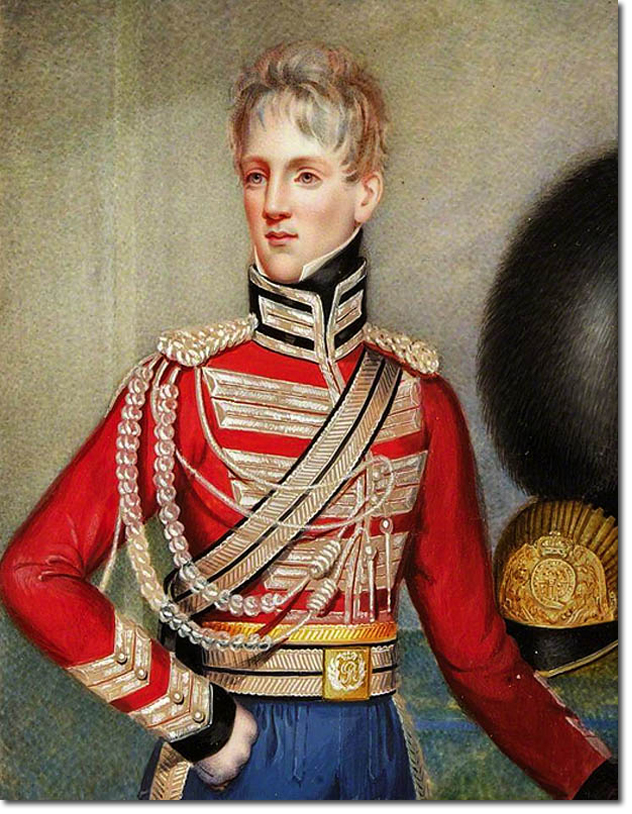|
|

 |
|
The uniform in the 1820s was the most expensive and the most splendid. The victory over Napoleonic France at Waterloo had proved to the nation how valuable their soldiers were. Those in the military were more highly respected than they had been in the 18th century. It was the period of the dandy, and since the 1790s officers' uniforms had became tight-fitting around the upper body, but this was accentuated now, and plenty of gold or silver lace was added. Collars were high, and shoulders adorned with large wings, epaulettes and plaited cords. The flamboyance was encouraged by the Prince Regent who was now King George IV. It was the beginning of the Long Peace and soldiers were more for show than for campaigning.
The Dress Regulations of 1822 describe the uniform, sometimes not very clearly, and draw subtle distinctions between dragoons and dragoon guards. They specify gold lace but in this decade some of the regular regiments had silver. The Queen's Bays, who were titled the 2nd, or The Queen's, Dragoon Guards at this time, were a silver laced regiment. They were not unique in this, the 4th and 6th Dragoons Guards were also silver. Some gilt items could not be avoided, like the front plate and chinstrap of the high-crested helmet, the belt buckle, and the waist girdle worn under the sword belt. The coat was scarlet with black collar, cuffs and turn-backs on the tails. Velvet was not specified until the 1834 Dress Regulations. The collar is three and a half inches deep, laced all around, with button loops either side and a small button, although there is no button in this portrait. Junior officers did not have any indication of rank. Field officers had embroidered badges sewn on the plaited shoulder cords: a star for majors, a crown for lieutenant-colonels and a crown and star for colonels. The plaited aiguillettes are now very long and fully developed. They remained a feature of military uniform and can be seen on officers of the Household Cavalry today. The 2nd DG pouchbelt is clearly defined here and was distinctive in having a black stripe in the middle of the herring-bone pattern silver lace. Netherwear was light blue baggy cossack trousers with a silver stripe down the side. Swords were the mameluke curved type, and a richly embroidered sabretache was also slung from the waist-belt. |
Armed Forces | Art and Culture | Articles | Biographies | Colonies | Discussion | Glossary | Home | Library | Links | Map Room | Sources and Media | Science and Technology | Search | Student Zone | Timelines | TV & Film | Wargames Library | Search | TV & Film | Wargames
